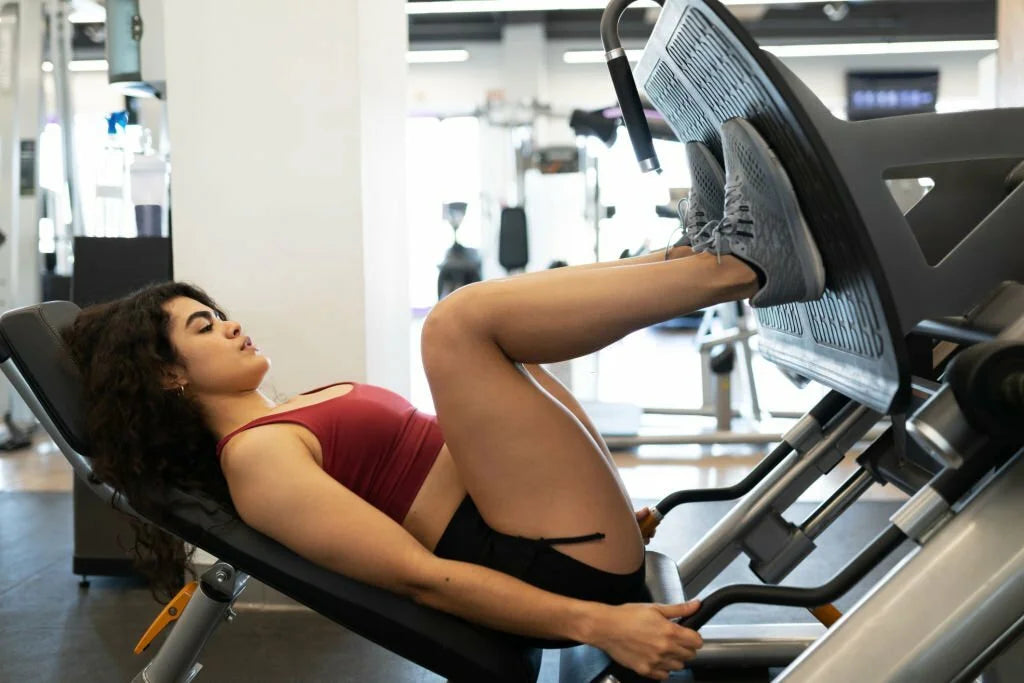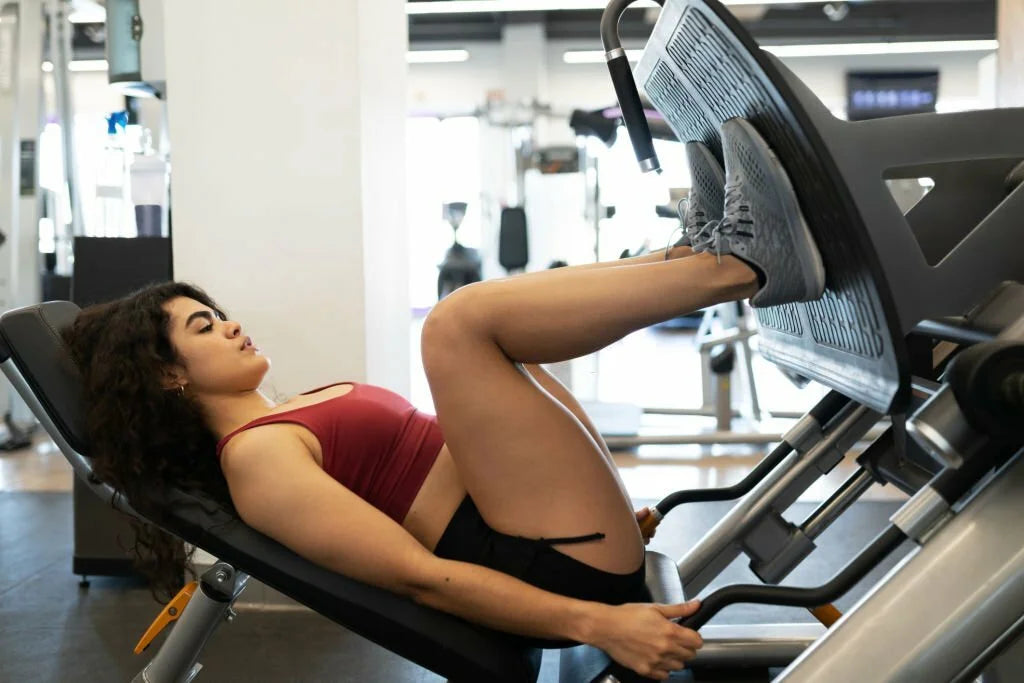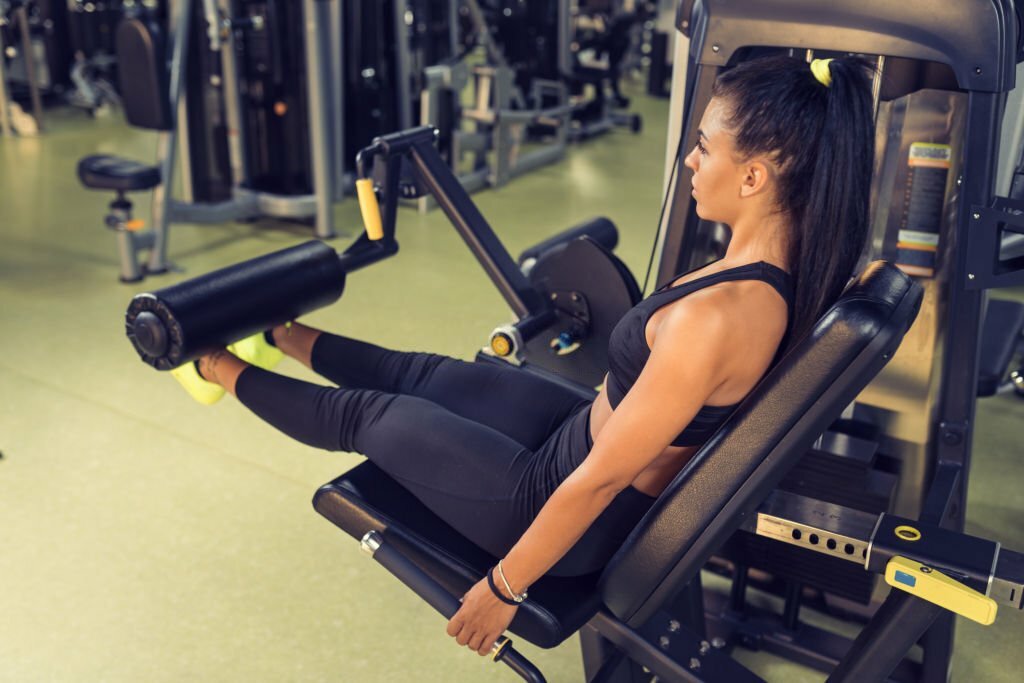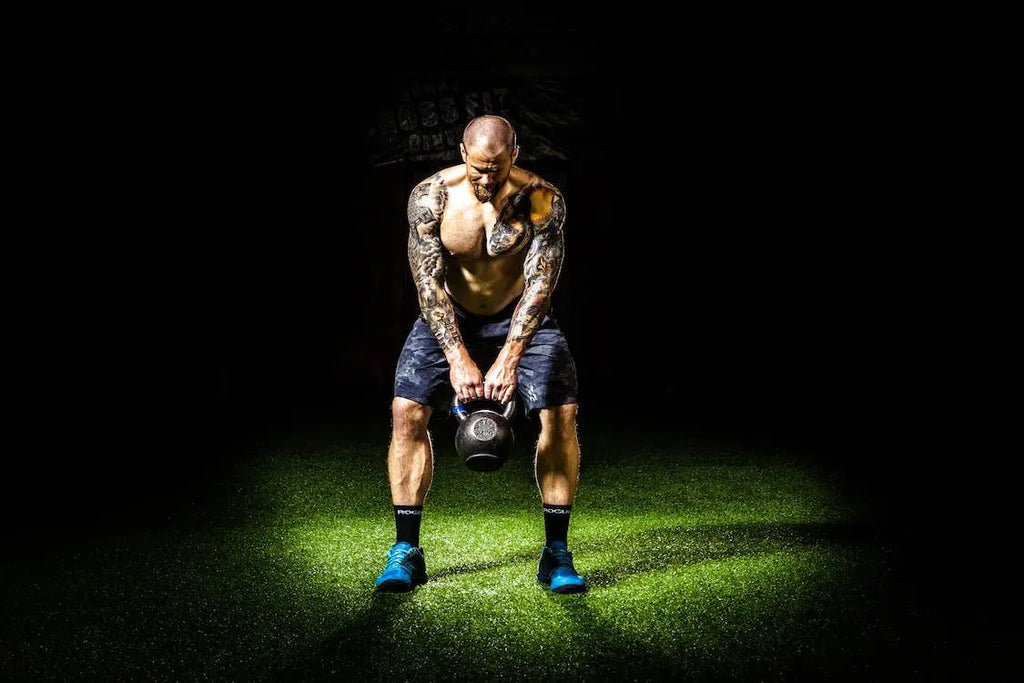Leg Press Foot Placement: Unlocking Maximum Leg Gains


When it comes to sculpting powerful and well-defined legs, few exercises rival the leg press. This gym favorite has been a cornerstone of leg workouts for decades and for a good reason. But did you know that the seemingly simple act of where you place your feet on the leg press platform can be a game-changer for your leg gains?
In this guide, we dive deep into leg press foot placement. Whether you're a seasoned lifter looking to fine-tune your technique or a beginner eager to kickstart your leg day journey, this article has you covered.
Muscles Worked in Leg Press
The leg press is a compound movement that engages all of the major muscles of your lower body: the quadriceps, hamstrings, glutes and calves, adductors, and abductors.
- Quadriceps: The quads are the main player in this exercise. This four-headed muscle is responsible for extending your knee and straightening your leg. So, when you push the weight platform away from your body, the quads do most of the heavy lifting.
- Hamstrings: The hamstrings, at the back of your thighs, help flex your knee joint and extend your hip joint. As you lower the weight platform, your hamstrings eccentrically contract to control the descent.
- Glutes: Your glute, or butt, muscles help to extend your hips as you push the platform away. The largest of the three glute muscles is the gluteus maximus. It is potentially the strongest muscle in your body and is a key to heavy lifting on the leg press.
- Calves: As you press your feet into the platform, your calves help to stabilize your ankles and keep your legs balanced.
- Adductors: These muscles are located on the inner thigh. They help bring your legs together. During the leg press, they help maintain proper alignment of your thighs so that your knees stay in line with your feet.
- Abductors: Located on the outer thighs, the abductors help move your legs away from each other and help counterbalance the inward pull of the adductors. By doing so, they contribute to maintaining a steady and controlled leg press motion.
How to Target Different Muscles in the Leg Press?
You target different muscle groups when you change where your feet are placed on the leg press platform. A high foot position with a wide stance mainly hits the quads. By bringing your feet lower and using a narrower stance, the focus shifts to the hamstrings. Experimenting with these foot positions allows you to customize your leg press workout to meet your individual goals, whether it's developing gigantic quads, shapely glutes, or more powerful hamstrings.
Foot Placement Techniques
There are six leg press foot placement variations:
Regular Stance
The regular stance is the position you get into naturally on the leg press machine. Your feet are shoulder-width apart and positioned in the middle of the food platform. This position mainly works the quads, with a secondary emphasis on the glutes and hamstrings.
Here's how to do the regular stance leg press:
- Start by positioning yourself correctly on the leg press machine. Your back should be pressed into the backrest, and you should grab the side handles.
- Place your feet about hip-width apart on the middle of the foot platform, with your toes pointing slightly outward.
- Push the weight upward using the balls of your feet, extending your legs fully while keeping your knees soft at the top of the motion.
- Lower the weight back down slowly, feeling the stretch in your quads as you bring your knees back to your chest.
High Foot Placement
Placing your feet high and wide on the platform targets your glutes, hamstrings, and adductors. That's because it involves more hip extension and allows for greater flute stretch.
Here's how to do the high foot placement leg press:
- Start by positioning yourself correctly on the leg press machine. Your back should be pressed into the backrest, with your feet hip-width apart.
- Place your feet about hip-width apart, with your toes pointing slightly outward. The balls of your feet should be aligned at the upper edge of the footplate.
- Push the weight upward using the balls of your feet, extending your legs fully while keeping your knees soft at the top of the motion.
- Lower the weight back down slowly, feeling the stretch in your quads as you descend.
Low Foot Placement
Placing your feet lower on the leg press footplate brings the spotlight to your hamstrings and glutes. This adjustment is ideal if you're looking to build strength and definition through your posterior chain. The low position increases the range of motion of your hip joint. This allows for a fuller stretch and contraction. It also reduces quad involvement, so the hamstrings and glutes have to take up the slack.
Let's now check out how to perform the low foot placement leg press:
- Begin by adjusting the seat so that your knees form a 90-degree angle when you're in the starting position and your back is firmly against the backrest.
- Place your feet lower on the footplate to target the hamstrings and glutes. Position them shoulder-width apart with your toes pointing forward. Ensure the entire sole of your foot is resting flat on the footplate.
- Push the weight upward through your heels, extending your legs fully while maintaining a slight bend in your knees at the top of the motion.
- Lower the weight back down slowly, feeling the stretch in your hamstrings and glutes as you descend.
Wide Stance
A wide foot position on the leg press machine targets the glutes, hamstrings, and adductors. This is the best position for developing glute strength for heavy deadlifting or other power movements involving the lower body.
Here's how to do the wide stance leg press:
- Begin by adjusting the seat so that your knees are aligned with your hips when you're in the starting position and your back is firmly against the backrest.
- Place your feet on the footplate wider than shoulder-width apart, with your toes pointing slightly outward. Your feet should be about 1.5 times shoulder width apart. Ensure your entire sole makes contact with the footplate.
- Push the weight upward through your feet, extending your legs fully while keeping your knees soft at the top of the motion.
- Lower the weight back down slowly, maintaining balance and feeling the engagement in your quads, hamstrings, and inner thighs as you descend.
Narrow Stance
A narrow foot placement emphasizes the vastus lateralis and vastus medialis. These are the outer and inner portions of your quad muscles. It minimizes hamstring engagement and limits the overall range of movement. As a result, you can lift more weight in this position.
Here's how to do the narrow foot leg press:
- Begin by adjusting the seat so that your knees align with your hips when you're in the starting position and your back is firmly against the backrest.
- Push the weight upward through your feet, extending your legs fully while keeping your knees soft at the top of the motion.
- Lower the weight back down slowly, maintaining balance and feeling the engagement primarily in your quadriceps as you descend.
Toes Only
A toes-only foot placement turns the leg press into a calf raise machine. It allows you to load the calves without putting compression pressure on your spine. This exercise effectively hits the gastrocnemius, which is the meaty part of the calf muscle.
Here's how to do the toes-only leg press:
- Place your feet at the very bottom of the footplate about eight inches apart. Rest your toes and the balls of your feet on the plate so that your mid feet and heels hang off the bottom. Angle your toes slightly inward.
- Push the footplate out to full extension. Your knees should be just short of lockout. This is the start position.
- Push the weight upward through the balls of your feet. The movement should only be a few inches, but this should fully extend the calves.
- Without bending your knees, reverse your foot movement to contract your calves.
Which Leg Press Foot Position is Best?
Your best leg press foot position depends entirely on what muscles you want to target. Here are some proper foot placement guidelines:
- To target your quads, use a regular or low foot placement position.
- To target your glutes, use a high foot placement position.
- To target the hamstrings, use a wide, high food placement position.
- To target the calves, use a low foot position with just your toes and balls of your feet on the platform.
- To target your adductors, turn your toes out.
- To target your abductors, turn your toes in.
Conclusion
Unlocking maximum gains through the leg press exercise involves understanding the subtleties of leg press foot placement. Each foot placement variation introduces a unique challenge to your muscles, allowing you to tailor your leg press routine to meet specific goals.
So, the next time you step onto the leg press machine, remember that your foot placement can make all the difference. Start incorporating these leg press foot placement techniques into your leg press routine. Your legs will thank you for the extra attention, and you'll be well on your way to achieving those leg gains you've always dreamed of.


